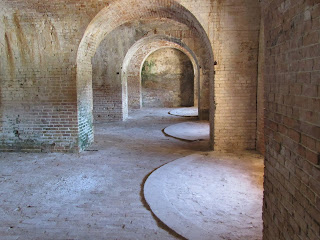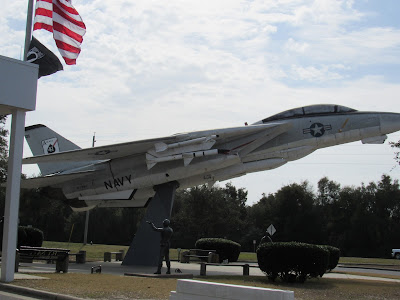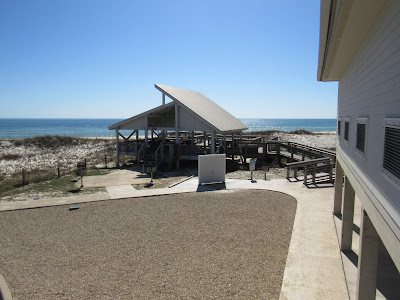Moving west to the Pensacola area lets us sight-see and visit relatives at the same time. Marlin has four cousins and their spouses who live in Lillian Alabama, just over the bridge from Pensacola. Shirley pampered Marlin and made his favorite dish; chicken and dumplings. The food was incredible, and the entire evening enjoyable. During our week at Big Lagoon State Park we got in multiple visits, in between all their scheduled responsibilities.
Frank Broz, Tudy Covert Broz, Elmer Covert, Melodye Zich, Judy Covert, Judy Cook, Marlin Cook, Shirley A. Covert, Jim Covert, Mary Hartt, Mike Hartt.
After a weekend of getting settled in with laundry and groceries, we spent all day Monday and half of Tuesday at the Naval Aviation Museum. This is the largest Naval Aviation museum in the world.
There is no way these few pictures can begin to convey the history of Naval aviation that is brought to life in this museum. It is hard to believe any survived when you look at the first attempts to land a flying aircraft on a moving ship. Extreme sports enthusiasts have got nothing on those guys.
The museum has over 150 restored aircraft. On our 2 hour guided tour, the docent had facts and stories about every plane we stopped to see. He made the experience come to life.
When Marlin was in the Air Force, on his free time, he got to play photographer and fly with one of the Doctors he worked with. The Doc was also a pilot and wanted someone to take pictures of scenes as he flew over the country side. The plane above Marlin, a T-28, is like the one they used.
The famous Blue Angles are based here in Pensacola. These four planes are A-4 Skyhawks. When they are not on tour around the country, they put on a show here every two weeks, with as many as 20,000 people attending.
This plane was the same kind that President George Bush flew in World War 11.
We took a lunch break at the Cubi Bar & Cafe, inside the Museum, Cubi was an actual Officers Club and cafe in the Philippines. It became a famous tradition for squadrons to hang retired plaques on the wall of this officers club. When the bar closed in 1992 the plaques, representing each tour of duty, were packed up and sent to the museum. The museum recreated the restaurant decor and layout exactly as in had been in the Philippines. The food was great and reasonably priced.
Plaque wall
The next day we took a trolley tour of the restored planes outside. Many historical planes out here also, but it was impossible to get pictures from inside the trolley. One of the fascinating things this tour guide explained to us was that many of the planes restored here were recovered from the bottom of Lake Michigan. During World War II pilots were trained in the Great Lakes. Sometime the training didn't go so well!
Highly recommended place to visit, regardless weather you are interested in planes or not. Fascinating history of Naval Aviation.
After our trolley tour, we went to the Pensacola Light house, just to add one more light to our list.
177 steps gets you to the best view in Pensacola. Except it was closed for painting the day we visited. The lighthouse, built in 1859, is on the grounds of the Naval Aviation Station.
The keepers house was added in 1869, as a duplex. Half for the keeper, half for the assistant keeper.
Impressive dwelling. We hope to come back on February 20 for a full moon tour of the house, complete with ghost stories, and a climb up the tower.

























































